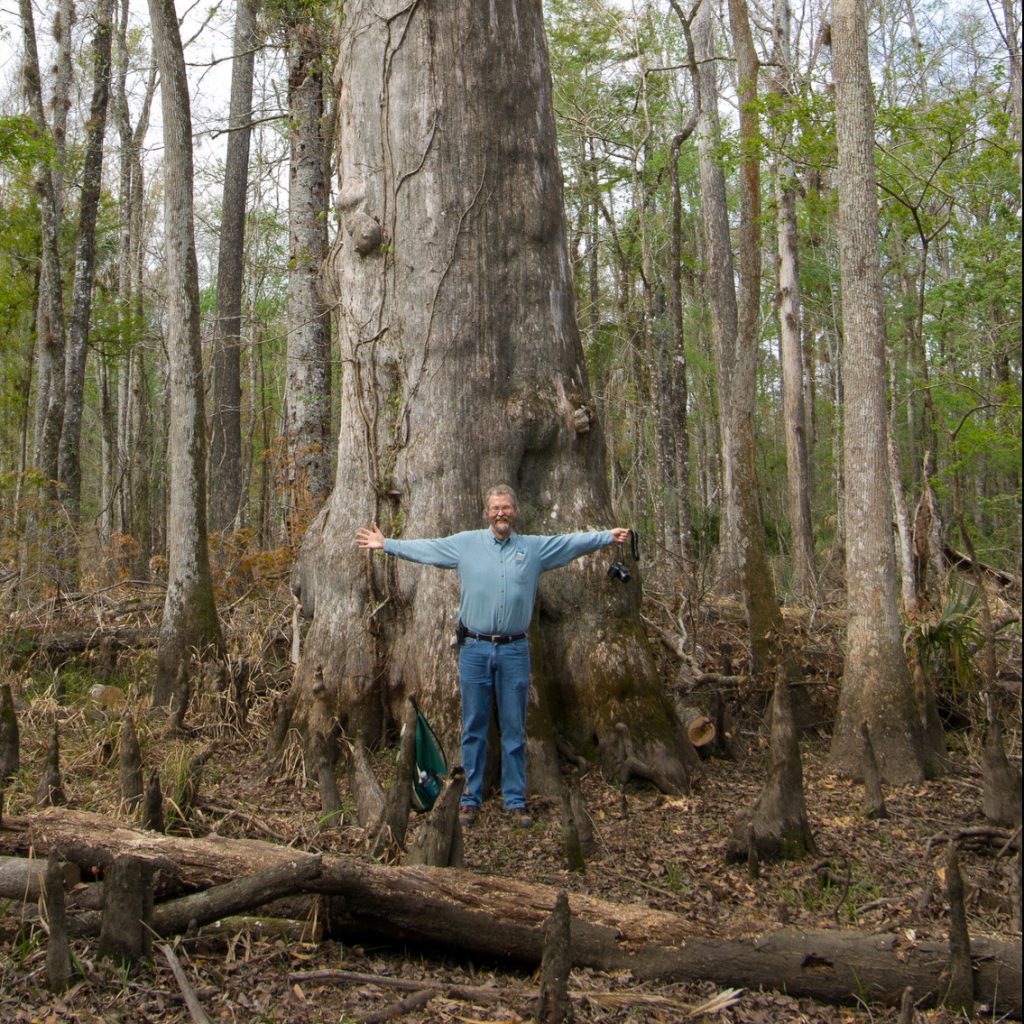Nels Parson - Now Retired
Land manager helps shape visitor experience across District lands

Providing public use and recreation on St. Johns River Water Management District lands doesn’t happen on its own. District Land Manager Nels Parson is responsible for the planning, placement and maintenance of recreation infrastructure to ensure the public enjoys a quality outdoor experience.
Parson, who joined the District in 1993 as regional land management specialist, is a perfect fit for the job.
“During my youth, we did a lot of camping and day trips visiting parks and natural areas,” Parson recalls. “We would pack a camp stove in the truck, strap the surfboards to the side of the horse trailer and load the horses to go to the beach — when there were still open woods up to the beach, which is all condos now — for a sunrise ride on the beach, then surf before cooking breakfast on the tailgate and heading home.”
Parson’s love for the outdoors only grew stronger with time.
“In college, I had a close relation with the park program director/professor who inspired me, as well as a park naturalist I worked with when I was with the state park service,” he says. “I worked with him revegetating the banks around the spring boil at Blue Spring and plugging eel grass in the spring run for manatee forage shortly after the state had purchased the property for a state park.”
During the Preservation 2000 land acquisition years, Parson was the Regional Land Manager responsible for management of all District properties between State Road 40 in central Florida and the Georgia state line. With the Florida Forever land acquisition program that statutorily emphasized public recreation on public lands, his current position was created to develop a more uniform public use/recreation program throughout the District.
For Parson, there’s no such thing as a typical day. He wouldn’t have it any other way.
“For me, any day could be either conducting or overseeing contract trail work or other maintenance on the District’s 300 miles of trails, trailheads or campsites; coordinating with agency partners or volunteers on projects; responding to public inquiries, and a multitude of other functions,” he says. “Hopefully, the experience people have on District lands inspires their appreciation for the natural resources found there. What I hope this equates to is that we grow future land managers or citizens to support the District’s missions.”
Parson urges people to take advantage of all that District lands offer, be it a woodland sojourn or a captured moment in time.
“Compared to other public lands, one of the best features of District lands is the majority aren’t heavily visited,” he says. “In a state with 20 million residents and more than 100 million visitors, the importance of lands that offer space, solitude and sometimes solace can’t be understated. Take the path less traveled, discover the difference.”
Rice Creek Conservation Area where a portion of the Florida National Scenic Trail that traverses an historic levee built for an 18th century rice plantation that allows one to walk into the heart of the swamp to view the seventh largest cypress tree in the state.


